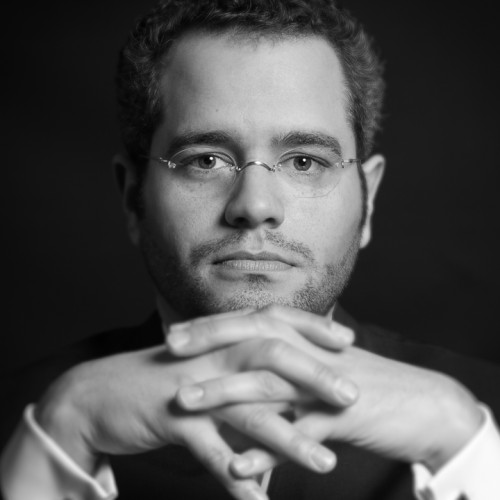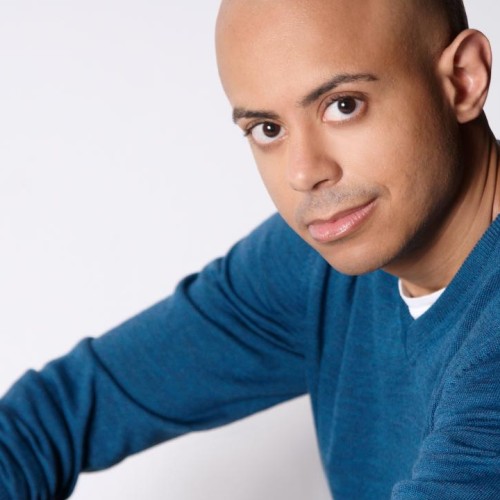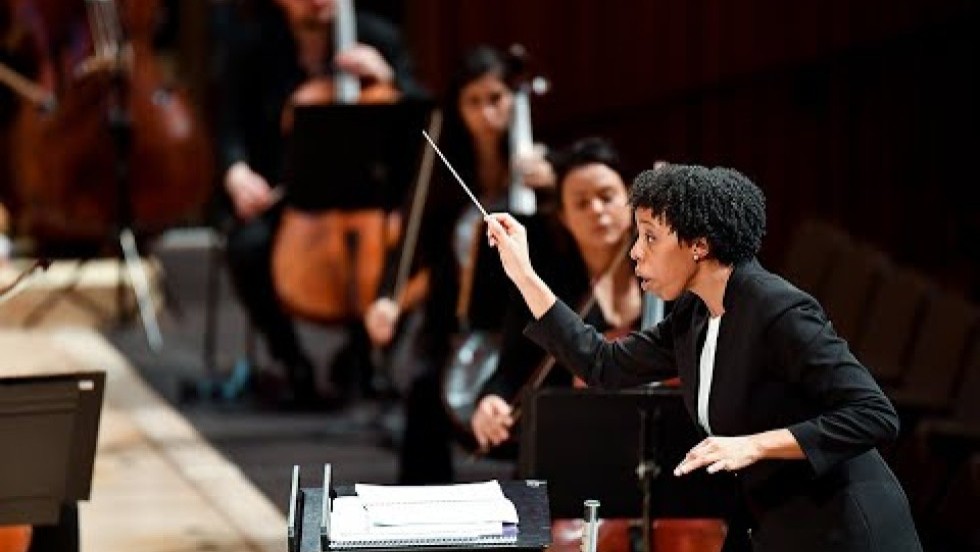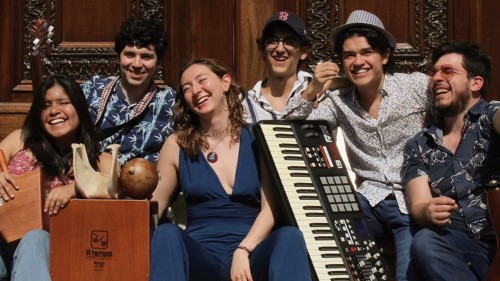
Chineke! Orchestra
Andrew Grams, conductor - Stewart Goodyear, piano
Cookie Notice
This site uses cookies to measure our traffic and improve your experience. By clicking "OK" you consent to our use of cookies.
This season marks an exciting and important Boston debut: the inaugural visit by Britain’s Chineke! Orchestra. Founded in 2015 by the pioneering double bass player Chi-chi Nwanoku, CBE, the Orchestra champions change and celebrates diversity through high-level professional performance opportunities and career development for Black and ethnically diverse classical performers in the UK and Europe. They've performed for enthusiastic crowds at some of Britain and Europe's top venues and festivals, drawing praise for the "dynamism and quality" of their performances (The ArtsDesk).
The program opens with Samuel Coleridge-Taylor's haunting 1909 Othello suite, before pivoting to the joyous and colorful atmosphere conjured by pianist and composer Stewart Goodyear in his Callaloo, a Caribbean suite for piano and orchestra. The performance ends with Florence B. Price’s lively and groundbreaking Symphony No. 1, infused with Juba dance motifs and other allusions to Americana.
The (London) Times knows, “there’s nothing like a Chineke! Orchestra concert for generating that party spirit. The nights always end with whistling and whooping. It’s music played with a passion and joy that freely radiates.”
Program Details
He was dubbed ‘the Black Mahler’ by American orchestral musicians when he arrived to conduct them in the early 1900s, a label which has followed him to the present day. But Samuel Coleridge-Taylor deserves recognition on his own terms. Born in the Holborn district of central London, to an English mother and Creole father, Coleridge-Taylor won a scholarship to the Royal College of Music and was propelled to international recognition at the age of only 22 with the epic cantata, Hiawatha’s Wedding Feast. This cantata amassed more than 200 performances at the Royal Albert Hall alone and sold more than 200,000 copies during his lifetime. Coleridge-Taylor was especially well received in America, where a plethora of societies were dedicated to him and, on the first of three visits here (1904), he was invited to the White House to meet President Teddy Roosevelt.
Among those familiar with his output, Coleridge-Taylor is as much known for his creative versatility as he is for his most famous work, Hiawatha. His output spanned from solo songs to symphonies, to incidental music for the theatre, of which the Othello Suite, in equal parts dramatic and breathtakingly lyrical, is a leading example.
The monthly publication Musical Progress, commenting on the renowned actor and director Herbert Beerbohm Tree’s 1911 production of Othello at His Majesty’s Theatre, identified its music as a feature on which the composer placed his unique stamp. The score’s "melodiousness…is quite a refreshing feature in these days, when so many composers seem to take fright if they find they have written a tune." Working within a theatrical context, particularly with Beerbohm Tree, who was not known for his musical ear, came with unique challenges. Any proposed musical material was as likely to find itself on the cutting room floor as in the final production. Fortunately this did not deter the composer, who, having worked on no fewer than four plays with the director prior to Othello, had become a frequent collaborator.
From an early age, Coleridge-Taylor was actively invested in questions surrounding race and colonialism. At 25, he was the youngest delegate to participate in the First Pan-African Conference held at Westminster Town Hall in July 1900. Established to campaign for black rights and question Western Imperialism, its global reach brought together leading figures from the US, the Caribbean, Africa, and the UK. It was here that the composer first crossed paths with W. E. B Du Bois, a contact he was to maintain for life.
Seeing no reason to separate his European musical training from his Pan-African outlook, Coleridge-Taylor wrote in the foreword to 24 Negro Melodies (1905) that his ambition was to do “what Brahms has done for the Hungarian folk-music, Dvorák for the Bohemian, and Grieg for the Norwegian.” Best put by writer and academic Mike Phillips, “he became, against the odds, part of his culture’s tradition, while openly declaring the mixture—foreign and domestic—of elements and ideas which moved him.” Today, the integrity of his creative voice retains its ability to speak just as clearly in our time as in his own.
© Charlotte Barbour-Condini
He was dubbed ‘the Black Mahler’ by American orchestral musicians when he arrived to conduct them in the early 1900s, a label which has followed him to the present day. But Samuel Coleridge-Taylor deserves recognition on his own terms. Born in the Holborn district of central London, to an English mother and Creole father, Coleridge-Taylor won a scholarship to the Royal College of Music and was propelled to international recognition at the age of only 22 with the epic cantata, Hiawatha’s Wedding Feast. This cantata amassed more than 200 performances at the Royal Albert Hall alone and sold more than 200,000 copies during his lifetime. Coleridge-Taylor was especially well received in America, where a plethora of societies were dedicated to him and, on the first of three visits here (1904), he was invited to the White House to meet President Teddy Roosevelt.
Among those familiar with his output, Coleridge-Taylor is as much known for his creative versatility as he is for his most famous work, Hiawatha. His output spanned from solo songs to symphonies, to incidental music for the theatre, of which the Othello Suite, in equal parts dramatic and breathtakingly lyrical, is a leading example.
The monthly publication Musical Progress, commenting on the renowned actor and director Herbert Beerbohm Tree’s 1911 production of Othello at His Majesty’s Theatre, identified its music as a feature on which the composer placed his unique stamp. The score’s "melodiousness…is quite a refreshing feature in these days, when so many composers seem to take fright if they find they have written a tune." Working within a theatrical context, particularly with Beerbohm Tree, who was not known for his musical ear, came with unique challenges. Any proposed musical material was as likely to find itself on the cutting room floor as in the final production. Fortunately this did not deter the composer, who, having worked on no fewer than four plays with the director prior to Othello, had become a frequent collaborator.
From an early age, Coleridge-Taylor was actively invested in questions surrounding race and colonialism. At 25, he was the youngest delegate to participate in the First Pan-African Conference held at Westminster Town Hall in July 1900. Established to campaign for black rights and question Western Imperialism, its global reach brought together leading figures from the US, the Caribbean, Africa, and the UK. It was here that the composer first crossed paths with W. E. B Du Bois, a contact he was to maintain for life.
Seeing no reason to separate his European musical training from his Pan-African outlook, Coleridge-Taylor wrote in the foreword to 24 Negro Melodies (1905) that his ambition was to do “what Brahms has done for the Hungarian folk-music, Dvorák for the Bohemian, and Grieg for the Norwegian.” Best put by writer and academic Mike Phillips, “he became, against the odds, part of his culture’s tradition, while openly declaring the mixture—foreign and domestic—of elements and ideas which moved him.” Today, the integrity of his creative voice retains its ability to speak just as clearly in our time as in his own.
© Charlotte Barbour-Condini
One can say that Callaloo is my soul food...a dish from the Caribbean composed of taro leaves, coconut milk, and spices from different cultures deliciously blended together. I grew up in a city where the population was what one would call a "callaloo," composed of people of various backgrounds and religions blending together to create an authentic urban flavour. The people of Trinidad, where half my family is from, call their community a "callaloo" nation, and they celebrate their history and present every February with Carnival, a festival of different sounds and traditions. Calypso, a blend of jazz, African, and French influences, is the heart of Trinidad.
My suite for piano and orchestra, aptly enough titled "Callaloo," was composed in 2016, two years after my first Carnival in Trinidad. At that festival, I was exposed to gorgeous Calypso music for two weeks straight, riveted every second. The instrumentation of the suite is almost identical to the symphony orchestra version of Gershwin's Rhapsody in Blue, with bongo taking the place of the banjo. My Callaloo is a blend of Calypso and Lisztian pianism.
The first movement, “Panorama,” is a high-spirited medley of three different melodic and rhythmic ideas. At Carnival, Panorama is a competition between different steel pan groups, each one giving their best arrangements and medley of the three top Calypso songs of the year. The most successful medley wins the prize. For this movement, I wrote my own three themes, but brought in elements that would be familiar to Calypso lovers. The movement uses all the instruments except the horns.
The second movement, “Mento,” is a mid-tempo homage to the Jamaican-style folk song, with a middle section in 3/4 time inspired by Afro-Cuban music. This movement uses only solo piano, horns, and strings.
The third movement, “Afterglow,” is a slow-tempo mento, made famous in the Western world by artists like Harry Belafonte. This movement uses solo piano, the lower strings, flutes, clarinets, and bassoons, plus the percussion section. The atmosphere is that of a siesta, and the colour is that of a golden sunset.
The fourth movement is a solo cadenza for solo piano, starting calm and gradually building up to a frenzy before the last movement, “Soca.”
Soca is the huge finale of Carnival, and is inspired by the Mas, a parade of soca bands and DJs with the costumed participants dancing in the streets to the music played. Everyone comes out to see and participate in the Mas, so it was only appropriate for me to use all the orchestral forces! If you listen closely, there is also a "sampling" of my piano sonata in this movement.
The world premiere of this work, with Kristjan Järvi conducting the MDR Symphony Orchestra, was in Leipzig, a city that I learned has an underground fan base of Calypso. The response from the audience was electrifying....They cheered and whooped, whistled and stamped. It was the response I hoped and composed for!
© Stewart Goodyear
One can say that Callaloo is my soul food...a dish from the Caribbean composed of taro leaves, coconut milk, and spices from different cultures deliciously blended together. I grew up in a city where the population was what one would call a "callaloo," composed of people of various backgrounds and religions blending together to create an authentic urban flavour. The people of Trinidad, where half my family is from, call their community a "callaloo" nation, and they celebrate their history and present every February with Carnival, a festival of different sounds and traditions. Calypso, a blend of jazz, African, and French influences, is the heart of Trinidad.
My suite for piano and orchestra, aptly enough titled "Callaloo," was composed in 2016, two years after my first Carnival in Trinidad. At that festival, I was exposed to gorgeous Calypso music for two weeks straight, riveted every second. The instrumentation of the suite is almost identical to the symphony orchestra version of Gershwin's Rhapsody in Blue, with bongo taking the place of the banjo. My Callaloo is a blend of Calypso and Lisztian pianism.
The first movement, “Panorama,” is a high-spirited medley of three different melodic and rhythmic ideas. At Carnival, Panorama is a competition between different steel pan groups, each one giving their best arrangements and medley of the three top Calypso songs of the year. The most successful medley wins the prize. For this movement, I wrote my own three themes, but brought in elements that would be familiar to Calypso lovers. The movement uses all the instruments except the horns.
The second movement, “Mento,” is a mid-tempo homage to the Jamaican-style folk song, with a middle section in 3/4 time inspired by Afro-Cuban music. This movement uses only solo piano, horns, and strings.
The third movement, “Afterglow,” is a slow-tempo mento, made famous in the Western world by artists like Harry Belafonte. This movement uses solo piano, the lower strings, flutes, clarinets, and bassoons, plus the percussion section. The atmosphere is that of a siesta, and the colour is that of a golden sunset.
The fourth movement is a solo cadenza for solo piano, starting calm and gradually building up to a frenzy before the last movement, “Soca.”
Soca is the huge finale of Carnival, and is inspired by the Mas, a parade of soca bands and DJs with the costumed participants dancing in the streets to the music played. Everyone comes out to see and participate in the Mas, so it was only appropriate for me to use all the orchestral forces! If you listen closely, there is also a "sampling" of my piano sonata in this movement.
The world premiere of this work, with Kristjan Järvi conducting the MDR Symphony Orchestra, was in Leipzig, a city that I learned has an underground fan base of Calypso. The response from the audience was electrifying....They cheered and whooped, whistled and stamped. It was the response I hoped and composed for!
© Stewart Goodyear
Florence Beatrice Price (née Smith) was raised in Little Rock, Arkansas, a town with a flourishing black middle class. Growing up in this well-connected community simultaneously exposed her to the heights of possibility for African Americans at the turn of the 20th century, and the political precarity of that community’s existence. Her father, James Smith, had worked against the odds to become a highly respected dentist, and was regarded as a pillar of the community by both black and white residents. Owing to the lack of suitable hotel accommodation for African Americans in Little Rock, individuals seen as leading figures of the black elite were frequently hosted in the Smith’s family home. It was commonplace for young Florence to meet the likes of W.E.B. Du Bois, Booker T. Washington, and Frederick Douglass as house guests. Little Rock’s black community were consistently vocal in their intention to promote African American cultural pride through education and civic leadership, intentions which left an enduring impression on Florence’s future ambitions.
Florence thrived in Little Rock and beyond. She not only graduated as valedictorian of her high school, but also flourished at the New England Conservatory of Music here in Boston (1903-1906), double majoring in organ and music education. She gained a scholarship to study composition with George Chadwick, and became set on pursuing composition professionally. But it was not until moving to Chicago in 1927 that she allowed composing to take a front seat. After graduating, she built an impressive reputation as an educator, and channelled many of her energies into writing instructional pieces for her piano students. Price had written a—now lost—symphony while a student in Boston, but after graduation composed no major orchestral works till her mid-forties. This delay was due in part to financial necessity, and in part to societal (and internalised) expectations that, as a woman, she would dedicate herself primarily to teaching.
Often noted for its promotion of jazz, blues, and gospel, early 20th-century Chicago was also a hub for black classical music. But it was safety rather than professional ambition which initially drove Price to the city. An expansion of America’s Jim Crow laws had escalated already worsening racial tensions in her affluent hometown. By 1927, Little Rock, previously known as a ‘paradise’ for the black middle classes, had become a community bearing grim witness to the fallacy of linear social progress. Tensions culminated in a public lynching in the town centre, after which Price fled with her husband and two children. Divorcing her husband after the financial pressures of the Great Depression escalated into violence at home, Florence kept the name of Price for professional purposes, having already built a career for herself. Along with a new city, a new chapter in Florence’s life, both personal and professional, had begun.
Price started work on her first symphony in January 1931, the same month of finalising her divorce. She found humour and opportunity in a physical injury, writing to a friend, ‘when shall I ever be so fortunate again as to break a foot!,’ and took the time to focus exclusively on composing. Rooted in African American musical traditions, the work actively drew not only from Dvorák’s Ninth Symphony, ‘From the New World,’ but also followed in the footsteps of Samuel Coleridge-Taylor, whose posthumous legacy and reputation for incorporating spirituals into his compositions left an even deeper impression in the US than in his birth country.
After a weighty first movement, the symphony incorporates a sure-footed, harmonically rich ten-part brass chorus in the second. An exuberant ‘Juba’ takes the place of what in European symphonies is often a scherzo, as Price harkens to an African-derived folk dance popular with enslaved people in the antebellum South. The work wraps with a finale that brims with brisk vitality, yet remains grounded in the pentatonic scales that are woven into the work’s fabric throughout, as Price resolved to bring the musical traditions of jazz and blues onto the concert platform.
Price was propelled to national prominence after becoming a multi-award winning entrant in the 1932 Rodman Wanamaker Competition. Amongst other successes for her piano compositions, her Symphony No. 1 in E minor was awarded the $500 first prize. It also gained the attention of Frederick Stock, then conductor of the Chicago Symphony Orchestra, who was in search of a work to complete his concert at the upcoming Chicago World’s Fair. Price became the first African American woman to have her work played by a major American orchestra, when her First Symphony was performed to resounding critical acclaim by Stock and the CSO in 1933.
Glossary
Allegro: at a brisk pace
Andante: at a walking pace. A moderately slow tempo
Juba: a dance originating from enslaved people in the American south
Largo: at a slow, dignified pace
Maestoso: to be performed in a majestic style
Scherzo: a playful composition. Often the third movement of a symphony
Semplice: to be performed in a simple style
© Charlotte Barbour-Condini
Florence Beatrice Price (née Smith) was raised in Little Rock, Arkansas, a town with a flourishing black middle class. Growing up in this well-connected community simultaneously exposed her to the heights of possibility for African Americans at the turn of the 20th century, and the political precarity of that community’s existence. Her father, James Smith, had worked against the odds to become a highly respected dentist, and was regarded as a pillar of the community by both black and white residents. Owing to the lack of suitable hotel accommodation for African Americans in Little Rock, individuals seen as leading figures of the black elite were frequently hosted in the Smith’s family home. It was commonplace for young Florence to meet the likes of W.E.B. Du Bois, Booker T. Washington, and Frederick Douglass as house guests. Little Rock’s black community were consistently vocal in their intention to promote African American cultural pride through education and civic leadership, intentions which left an enduring impression on Florence’s future ambitions.
Florence thrived in Little Rock and beyond. She not only graduated as valedictorian of her high school, but also flourished at the New England Conservatory of Music here in Boston (1903-1906), double majoring in organ and music education. She gained a scholarship to study composition with George Chadwick, and became set on pursuing composition professionally. But it was not until moving to Chicago in 1927 that she allowed composing to take a front seat. After graduating, she built an impressive reputation as an educator, and channelled many of her energies into writing instructional pieces for her piano students. Price had written a—now lost—symphony while a student in Boston, but after graduation composed no major orchestral works till her mid-forties. This delay was due in part to financial necessity, and in part to societal (and internalised) expectations that, as a woman, she would dedicate herself primarily to teaching.
Often noted for its promotion of jazz, blues, and gospel, early 20th-century Chicago was also a hub for black classical music. But it was safety rather than professional ambition which initially drove Price to the city. An expansion of America’s Jim Crow laws had escalated already worsening racial tensions in her affluent hometown. By 1927, Little Rock, previously known as a ‘paradise’ for the black middle classes, had become a community bearing grim witness to the fallacy of linear social progress. Tensions culminated in a public lynching in the town centre, after which Price fled with her husband and two children. Divorcing her husband after the financial pressures of the Great Depression escalated into violence at home, Florence kept the name of Price for professional purposes, having already built a career for herself. Along with a new city, a new chapter in Florence’s life, both personal and professional, had begun.
Price started work on her first symphony in January 1931, the same month of finalising her divorce. She found humour and opportunity in a physical injury, writing to a friend, ‘when shall I ever be so fortunate again as to break a foot!,’ and took the time to focus exclusively on composing. Rooted in African American musical traditions, the work actively drew not only from Dvorák’s Ninth Symphony, ‘From the New World,’ but also followed in the footsteps of Samuel Coleridge-Taylor, whose posthumous legacy and reputation for incorporating spirituals into his compositions left an even deeper impression in the US than in his birth country.
After a weighty first movement, the symphony incorporates a sure-footed, harmonically rich ten-part brass chorus in the second. An exuberant ‘Juba’ takes the place of what in European symphonies is often a scherzo, as Price harkens to an African-derived folk dance popular with enslaved people in the antebellum South. The work wraps with a finale that brims with brisk vitality, yet remains grounded in the pentatonic scales that are woven into the work’s fabric throughout, as Price resolved to bring the musical traditions of jazz and blues onto the concert platform.
Price was propelled to national prominence after becoming a multi-award winning entrant in the 1932 Rodman Wanamaker Competition. Amongst other successes for her piano compositions, her Symphony No. 1 in E minor was awarded the $500 first prize. It also gained the attention of Frederick Stock, then conductor of the Chicago Symphony Orchestra, who was in search of a work to complete his concert at the upcoming Chicago World’s Fair. Price became the first African American woman to have her work played by a major American orchestra, when her First Symphony was performed to resounding critical acclaim by Stock and the CSO in 1933.
Glossary
Allegro: at a brisk pace
Andante: at a walking pace. A moderately slow tempo
Juba: a dance originating from enslaved people in the American south
Largo: at a slow, dignified pace
Maestoso: to be performed in a majestic style
Scherzo: a playful composition. Often the third movement of a symphony
Semplice: to be performed in a simple style
© Charlotte Barbour-Condini
Featured Artists
“The purity of tone and rhythm were enchanting”
The Times (London)
Videos
Is this your first Celebrity Series performance?
We're glad you're here! Please take a look at our special welcome offer for first-time buyers.
NEC's Jordan Hall Information
This performance is made possible in part by support from Celebrity Series' LIVE PERFORMANCE! Arts for All Endowment and Innovation Funds, with generous leadership support from Susan & Michael Thonis.
Related Events


Kalia Vandever, trombone & Charles Overton, harp
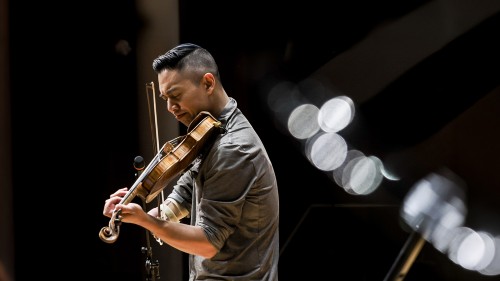
Adrian Anantawan & Friends
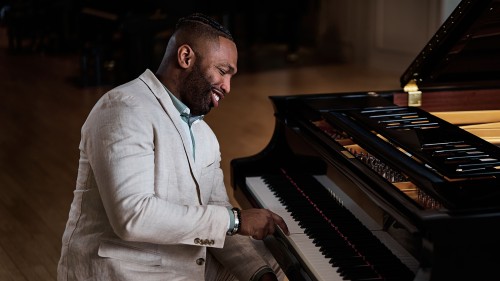
John Paul McGee Jazz Trio

J’Nai Bridges, mezzo-soprano

Music From The Sole
House is Open, Going Dark
Stay in touch with Celebrity Series of Boston and get the latest.
Email Updates Sign up for Email Updates
